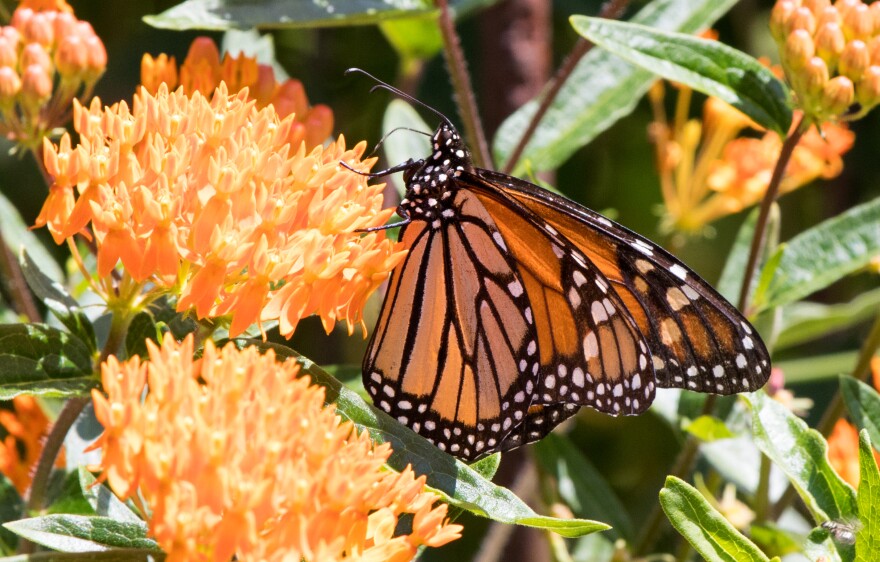Monarch butterfly populations have declined by more than 99% since the 1980s. Millions have disappeared in the past 40 years and it’s estimated that there are only 30,000 left in the Western United States. Wasatch and Summit County citizen scientists can help to identify monarchs as they complete the late summer migration south.
This is the time of year for monarch butterflies to migrate through Utah on their way the coasts areas of California and Oregon, where they spend the winter. Drought, pesticides, habitat depletion and other unknown causes have impacted the populations to the extent that the iconic bright orange and black monarch butterfly may be listed on the endangered species designation in December. The designation could determine how insect habitat is protected across the nation.
Rare Insects Conservation Officer Amanda Barth is with the Utah Department of Natural Resources. She says “citizen scientists” are the lifeblood of their efforts to address the dramatic decline in population over the past four decades. They want to learn more about monarch breeding and habitat. She says people can get involved through several programs such as Utah Pollinator Pursuit, Southwest monarchs and monarchs of the Wasatch.
“There are people who agree to use a certain collector app for their phones. Some people are using I-monarch Naturalist projects.
“We at the state partnered with Wild Utah Project to reach as many volunteers as Wild Utah Project has access to and have people report their observation of monarchs at all life stages, as well as bumblebees, because we are also seeing massive declines of bumblebees across the West,” Barth said
While monarchs are migrating and breeding in this part of Utah, Barth says citizen scientists can submit their observations which will be used by her team to learn more about the insects.
“And then they spend the growing season, these nice wildflower months when milkweed are growing all over the west, breeding and multiplying and staying warm,” she said. “And the days get shorter and rather than mate, they start storing fat and start migrating back towards California and Oregon.”
Barth says one of the best ways to help the monarch is to preserve milkweed which is often found on roadsides or in pastures. She says milkweed is poisonous to cattle, so ranchers eradicate the plant.
“It’s a common thread among a lot of these insect declines. It’s just habitat loss and pesticides. You know, the way we use the land and the way we damage it, and the damage we leave. The monarch butterflies are the most recognizable or one of the most charismatic species and you know the loss of this charismatic species has alerted people to the issue of pollinator decline. And there are some being spotted in Summit County. If you see boggy lakes that are stream fed, that are river fed. If you’re seeing big patches of milk weed, those monarchs know about those patches too.”
As a rare insect specialist, Barth says she has spent a lot of time looking for habitat, but she says it’s difficult because there hasn’t been a monsoon season this year and it’s been very dry.
Planting flowers in backyards and gardens is another way to help preserve insect habitats.


